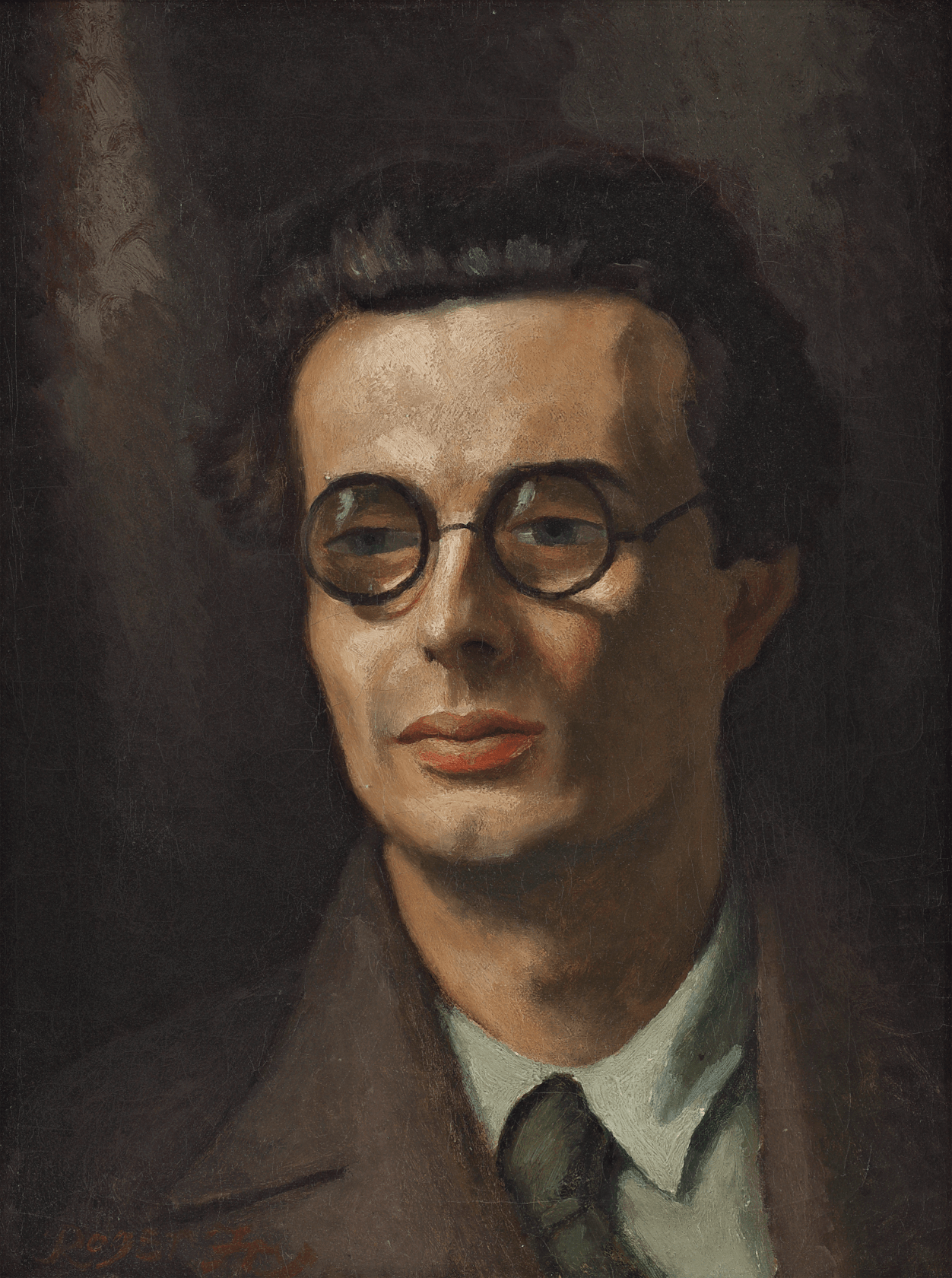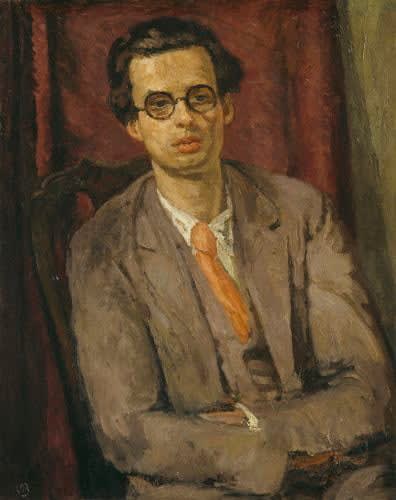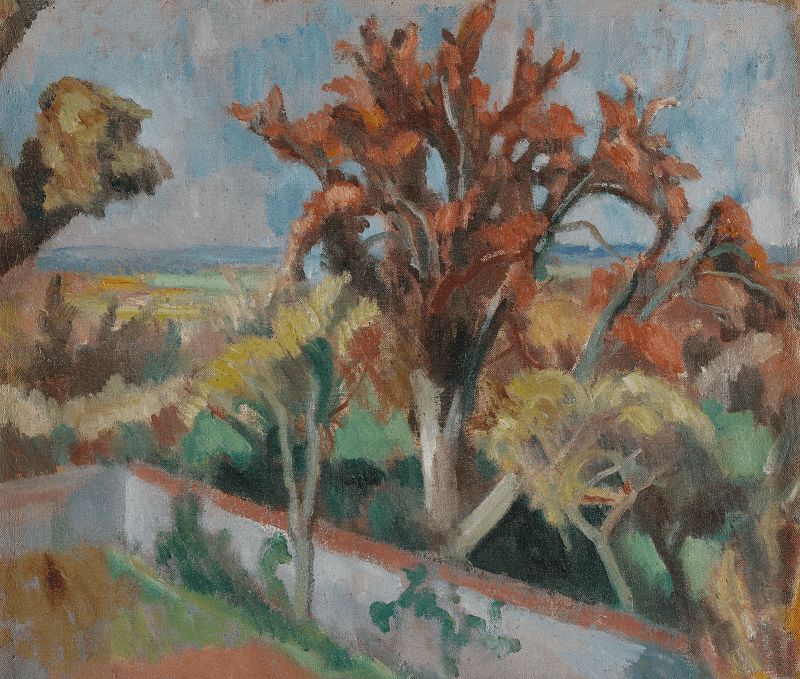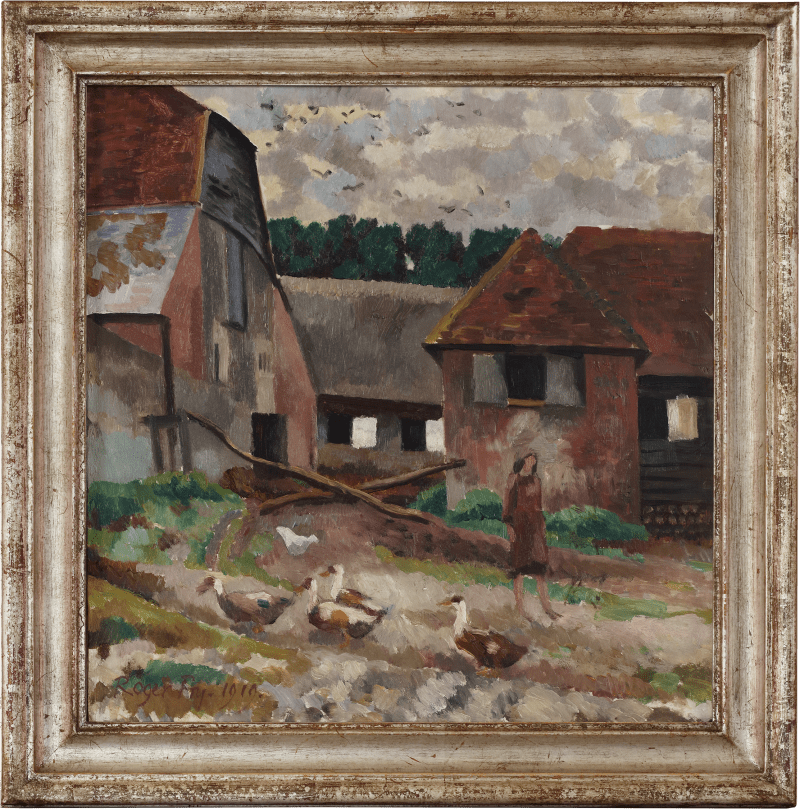The present work, previously thought to be lost, was painted over a period of several months at the end of 1931, the year in which Aldous Huxley (1894-1963) wrote his seminal work, Brave New World, which brought him international acclaim. Characterful and direct, it is a notable example of Fry’s portraiture and holds a key position within the painted iconography of one of Britain’s greatest authors.
Roger Fry was a seminal figure not only within the Bloomsbury Group but also within the wider development of modern art in Britain. He was fiercely intellectual and, according to Virginia Woolf, ‘had more knowledge and experience than the rest of us put together’. His groundbreaking Post-Impressionist exhibitions, held at the Grafton Galleries in London in 1910 and 1912, inspired a new generation of artists and changed the course of art in Britain. To have recognised the importance of French Modernism with such a confident and intuitive understanding indicated that Fry had...
The present work, previously thought to be lost, was painted over a period of several months at the end of 1931, the year in which Aldous Huxley (1894-1963) wrote his seminal work, Brave New World, which brought him international acclaim. Characterful and direct, it is a notable example of Fry’s portraiture and holds a key position within the painted iconography of one of Britain’s greatest authors.
Roger Fry was a seminal figure not only within the Bloomsbury Group but also within the wider development of modern art in Britain. He was fiercely intellectual and, according to Virginia Woolf, ‘had more knowledge and experience than the rest of us put together’. His groundbreaking Post-Impressionist exhibitions, held at the Grafton Galleries in London in 1910 and 1912, inspired a new generation of artists and changed the course of art in Britain. To have recognised the importance of French Modernism with such a confident and intuitive understanding indicated that Fry had a mindset far ahead of his time.
It was during this period in his career, following on from a curatorial position at the Metropolitan Museum of Art in New York, that Fry became fully integrated into the Bloomsbury circle. Bringing with him his unrivalled knowledge of art, Fry had a profound impact on the artistic direction of two of the group’s most prominent members: Duncan Grant (1885-1978) and Vanessa Bell (1879-1961). It is at this point in their respective careers that their painting becomes more aesthetically concerned with formal relationships within their art. This shift is indebted to Fry’s interpretation of French Post-Impressionist painting. In 1913, both Grant and Bell joined Fry’s newly formed Omega Workshops, which aimed to unite the decorative and fine arts together in a practical and sustainable manner.
Aldous Huxley first became affiliated with the Bloomsbury Group during the First World War, while working as a farm labourer at Garsington Manor, the home of Lady Ottoline Morrell (1873-1938). Morrell was a consistent supporter and patron of the Bloomsbury Group and sponsored Fry’s 1912 exhibition. It was through Morrell that Huxley met some of the greatest thinkers of the period, many of whom had an enduring effect on his own writing. Among the regular visitors to Garsington were Bertrand Russell (1872-1970), Clive Bell (1881-1961), John Maynard Keynes (1883-1946), Lytton Strachey (1880-1932), Virginia Woolf, Duncan Grant, Vanessa Bell and, of course, Roger Fry.
It is clear that Fry had an enormous respect for Huxley despite the fact that he was almost thirty years his junior. It is this admiration that led Fry to paint this portrait of Huxley alongside Vanessa Bell in late 1931 during a shared sitting. Fry depicts Huxley as he commonly appeared in photographs and other paintings between 1931 and 1934. His hair is swept back to reveal a broad forehead, and his face is adorned with perfectly round spectacles. It is this image of Huxley that holds a certain sense of familiarity and yet this particular work was considered lost until recently.[1]
The similarity between the present work and that of the same sitter by Vanessa Bell in the National Portrait Gallery suggests that they were both painted during the same sitting, with the two artists working side by side.[2] This theory is supported by recent conservation, which revealed that Huxley’s tie in the Fry portrait was originally orange, as observed in the Bell portrait. It was perhaps changed for aesthetic reasons; on this smaller scale, Fry may have considered a brightly coloured tie too distracting. It also became clear during conservation that the portrait was originally larger and that Fry later reduced it in size and signed it again. The reason for this may never be known, but the result is a likeness of great intensity.
It is certain that Fry had completed his portrait by 18th January 1932, as Clive Bell wrote to Frances Marshall (later Partridge, 1900-2004) that ‘[Fry] has now completed a […] portrait of Aldous which in horror surpasses anything he has ever painted before’. Bell may not have admired the portrait – according to a later biographer, Huxley distracted Fry with his ‘incessant, brilliant talk’- but it represents the coming together of two great literary minds and, as such, is one of the most interesting Bloomsbury portraits to have survived from this period.[3]
[1] See Frances Spalding, (1999) Roger Fry Art and Life. University of California Press: Berkeley and California, p. 252.
[2] NPG 6717
[3] Spalding, p. 252.











